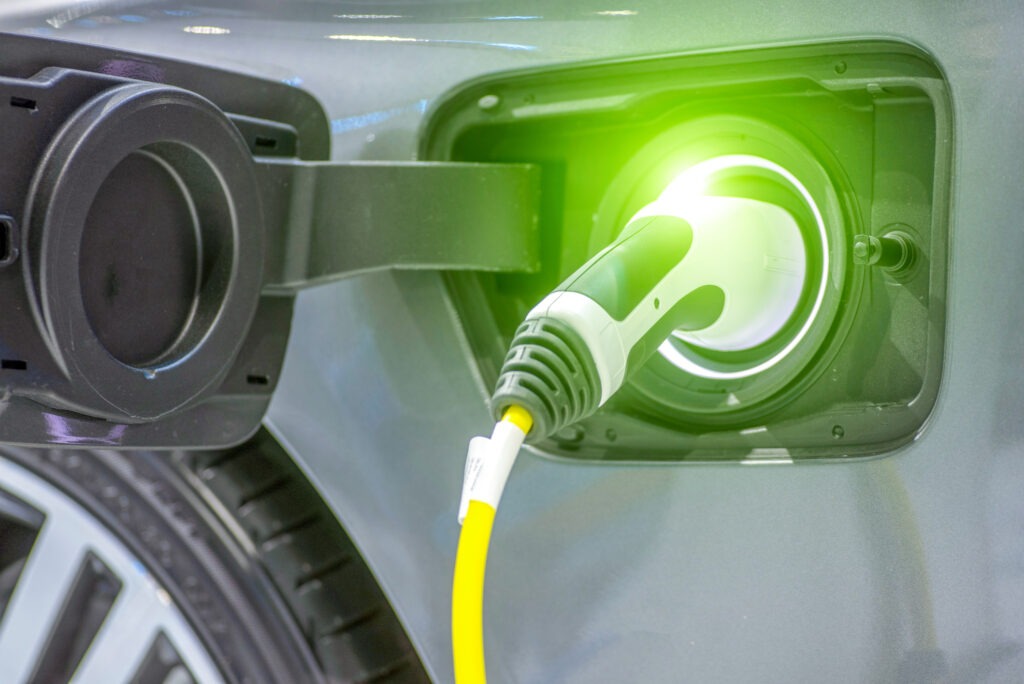Could incentives spark BEV growth in the UK?
27 June 2024

With a slowdown in BEV registrations and uncertainty over zero-emission targets, how is the situation affecting the UK’s automotive industry, and what is needed to stimulate growth? Autovista24 special content editor Phil Curry explores the subject.
The UK’s automotive sector needs closer cooperation with the country’s government to deliver its full growth potential, while also allowing for a smoother transition to zero-emission motoring.
This was the call from the recent Society of Motor Manufacturers and Traders (SMMT) International Automotive Summit. With the country gearing up for a general election, there is an opportunity to further define automotive policies and ensure the industry continues to benefit the UK economy.
However, as sales of battery-electric vehicles start to slow, and carmakers continue to focus on their targets as part of the zero-emission vehicle (ZEV) mandate, there are challenges ahead. These need to be met, to keep the UK’s automotive industry on the right path towards a cleaner, and more sustainable future.
‘As we head towards the election, one major party says they represent change, while the other says that party does not have a plan. What we need, as the automotive industry, is both,’ said Mike Hawes, chief executive of the SMMT.
‘With the current geopolitical turmoil and the global technology race, we need stability at home as well. And of course, everyone recognises the UK desperately needs growth.
‘If the new government works closely with us, we can deliver that growth, worth almost £50 billion (€59 billion). We will build 500,000 more vehicles and export them around the world. We will sell 750,000 more cars, mostly zero-emission cars, which will help deliver our net-zero ambitions,’ Hawes outlined.
The automotive manifesto
The SMMT highlighted new research that shows how targeted policies would see the UK’s new car market value grow from just over £70 billion a year today to almost £80 billion every year over the next decade.
According to the analysis, more than 17 million fossil-fuel cars will be replaced by zero-emission vehicles by the end of 2035. At the same time, more than a million EV cars and vans could be rolling off the country’s production lines every year, increasing the sector’s value by 5% over the current outlook.
Furthermore, market modelling revealed that halving value-added tax (VAT) on new retail BEV purchases for just the next three years would add 300,000 zero-emission car registrations on top of the industry body’s current outlook. This would lead to 2.3 million new BEVs on the road during this period.

The analysis formed the basis for Vision 2035: Ready to Grow, launched at the SMMT summit as a manifesto for the automotive industry. Building on last year’s report, the document sets out a clear cross-party plan to strengthen the market, bolster trade, upskill the workforce, provide low-cost and low-carbon electricity as well as deliver an industrial transformation strategy.
Zero-emission for everyone
The UK’s zero-emission passenger car market has encountered challenges this year. While the powertrain has improved both its registration figures and market share in the first five months of the year, the rate of growth has slowed.
Currently, BEV deliveries are up by 9.7%, while the market share sits at 16.1%, just 0.4 percentage points higher than the same period in 2023.
The ZEV mandate calls for each carmaker in the country to reach a 22% share of zero-emission sales in 2024. This will rise to a 28% hold next year, and increase annually until at least 2030. However, there are concerns that many manufacturers may miss the mark.
‘We need financial incentives for people to buy electric vehicles. This could be in the form of VAT cuts on purchasing, but also tax cuts on the price of public charging, to ensure that those who charge at home pay the same as those who cannot,’ commented SMMT chief executive Mike Hawes.
The role of incentives in BEV purchasing has been made clear by the current situation in Germany’s new-car market. The powertrain has experienced four consecutive months of decline, with deliveries between January and May down by 15.9%. This comes after a sudden end to purchasing incentives in December 2023, with business incentives ending in September last year.
The power of incentives
The UK has not had incentives for BEV purchases since the end of the Plug-in Car Grant ended in June 2022. Since then, registrations of BEVs have continued to increase, but the slowdown suggests that more is now needed, especially in the private sector.
‘While the overall BEV market share is at 16%, the share of these passenger cars in the fleet sector is 32%. When you look at how government incentives are structured through company tax incentives, the transition to zero-emission is working,’ stated Ashley Andrew, president of Hyundai & Genesis UK.

‘In stark contrast to that is the private sector, where BEVs take just a 10% share. So, even by comparison, it is clear there needs to be action in the private sector. And since the removal of the plug-in car grant, there has been no real incentive for private buyers.
‘So, to accelerate the overall uptake, we need similar mechanisms that we have in fleet tailored to the private sector,’ he concluded.
Incentives are also required for charging infrastructure as well. Here, both financial and procedural pushes are needed, to allow for the increased development of the network and make the cost of public and private charging more equal.
‘Of around 62,000 charge points in the UK, one in three has been installed in the last 12 months. But to get even more chargers in the ground, we need the grid planning and permitting charges that slow us down [to be] removed,’ commented Vicky Read, chief executive officer at Charge UK.
‘We also need to make charging and owning a BEV easy and more affordable. Equalising VAT on public and home charging would help with that. We also need to address standing costs, which have skyrocketed by 300% or more in recent years,’ she added.
Stellantis concerns
With the BEV market slowing, and pressures placed on carmakers through the ZEV mandate, there is a potential for penalties to be applied in the first year of the legislation, while struggles could continue into the coming years.
This point was highlighted by Maria Grazia Davino, Stellantis UK managing director, who commented that if the new government cannot help the automotive industry reach its ZEV targets, the manufacturer may reconsider its production presence in the UK.
‘The point is the glide path to get there. The rate of trajectory could be damaging for the industry in the future. What is happening in the next few years is crucial. If the demand does not improve, then we, as a company, will be forced to make some difficult decisions as we manage profit and loss, and operational decisions,’ she stated.
‘We are not planning to leave, and we do fight for our production in the UK. But you must have advantages to build in a country, and we have undertaken big investments, with more to come. But if this market becomes hostile for us, then we will enter an evaluation to produce elsewhere.
‘Currently, in the UK we produce largely for the country itself, but also for the export market. So, we can either invest elsewhere or disinvest in the UK,’ Davino explained.
‘Stellantis has been very open with the previous government, and we will continue to have these conversations. We have proactive proposals, not only to stimulate the demand but also to manage the trajectory to get there.
If we are not compliant with mandate targets, then we start to accrue heavy fines. This impacts profit and loss, and then we must ask the question of why we continue to invest in the market if we have negative results,’ she concluded.
Reinstating the ban
Adding to these concerns are the political instabilities connected with a major election. The UK government announced in September last year that the proposed 2030 ban on sales of new petrol and diesel models would be pushed back to 2035. Yet, the reinstatement of the original deadline has become a manifesto point for many parties.
‘When the last government announced the ban would move back to 2035, the industry response was mixed. However, we are now a year down the road. Should a new government want to put the 2030 date back in place, by the time it happens we would have around five years to prepare,’ commented Hawes.
‘You now must consider that over the last 12 months, carmakers have adjusted their model cycles based on the new deadline, so for it to change again will increase uncertainty. However, everyone remains committed to 2035 for the full decarbonisation of passenger cars. Everyone needs to know what they can sell beyond 2030 and that could still be unclear.
‘What matters is having that certainty, having an appropriate shift that is possible in terms of time scale, but also having the conditions that enable you to have that strong, vibrant domestic market,’ Hawes concluded.



